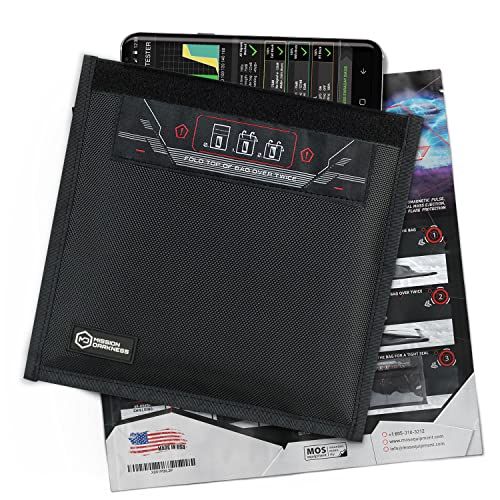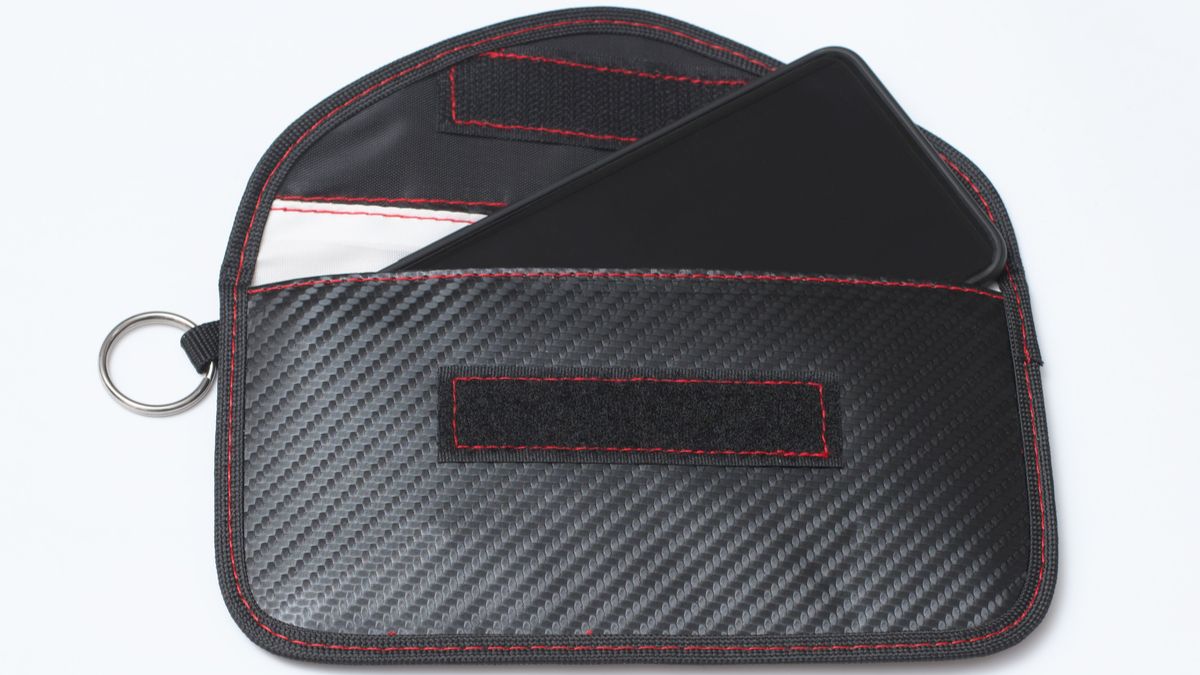Quick Links
Faraday bags use the same principles as a Faraday cage to prevent wireless signals from leaving or reaching your devices. So what are the reasons to use one, and how is it different from turning the device off or using airplane mode?
How Faraday Bags Work
Faraday bags are essentially portable, flexible Faraday cages. A Faraday cage, named after scientist Michael Faraday, blocks electromagnetic waves from reaching anything inside it.
These cages work by surrounding an object with a conductive metal mesh. When an electromagnetic field encounters the cage, it's conducted around the objects inside. If you were struck by a bolt of lightning while inside a Faraday cage, you'd be completely unharmed as the energy is diverted around you. Ideally, the cage should be made of continuous metal, but that's often too expensive or impractical. A mesh works just as well, as long as the holes in the mesh are sufficiently smaller than the wavelength of the signals you want to block.

Mission Darkness Non-Window Faraday Bag
The Mission Darkness bag is an affordable and effective way to protect your RFID devices from attack or to temporarily block your phone's radios to prevent tracking or data theft.
Getting back to Faraday bags, these are made of a conductive metallic fabric that blocks signals from reaching whatever is inside. You can buy these bags just about anywhere these days, so are they worth your time and money?
Why Use a Faraday Bag?
Consider that your smartphone probably doesn't have a removable battery and that your Wi-Fi, Bluetooth, and other internal radios are operated by a software switch---not a physical kill-switch. In other words, you have no way of knowing that your device is really not sending and receiving data when you put it in airplane mode or toggle Wi-Fi off.
That's one reason that Faraday bags are useful. When you want to make sure your devices aren't shaking hands with Wi-Fi hotspots, cellular towers, RFID readers, and Bluetooth beacons, you can use a bag to hide them. If you want to temporarily go incognito, using a Faraday bag is better than leaving your phone behind.
Another great reason to use a Faraday bag is to protect your RFID devices from being skimmed. You can put access cards, car RFID fobs, and anything else that can be copied at short distances inside the bag. This will foil criminals trying to steal your data using skimming methods.
Making Sure Your Faraday Bag Works
Faraday bags are effective, but they can be compromised. If the bag develops holes or the material wears out, it can start allowing signals through. Some Faraday bags simply aren't any good out of the box.
This makes it important to test your bag when you first get it and periodically over the course of your time with it. The simplest way to see if the bag is working is to put your phone in it and then try to call it from another device. If the call gets through, then you know the bag isn't working properly. The same goes for RFID cards. If the card still works when sealed in the bag, that bag isn't working correctly.
Mission Darkness, a manufacturer of Faraday bags, also has an Android app designed to test bags. After running the test, you'll get a report showing exactly what the app was able (or unable) to get through the shield.
Should You Use a Faraday Bag?
Assuming that you have a working bag that you can trust to do its job, there's nothing wrong with adding it to your personal privacy arsenal. The ability to cut off your devices from wireless communication is a powerful option when you don't, for example, want Google to know that you're visiting certain places. If you suspect that your phone has been compromised by serious tracking malware, like a rootkit, these bags provide a non-technical way to deal with the issue immediately. Even hackers can't hack the laws of physics, after all.
There are downsides to using a Faraday bag. If you forget your stuff in the bag, you'll miss calls and emails. If you lose your bag, you can't use services like Find My to track your stuff down. Functional location sharing features also offer a level of safety in emergency situations. Use yours correctly, however, and you can slip on and off the grid at will without giving up on your smartphone. Now you just have to deal with public facial recognition.

